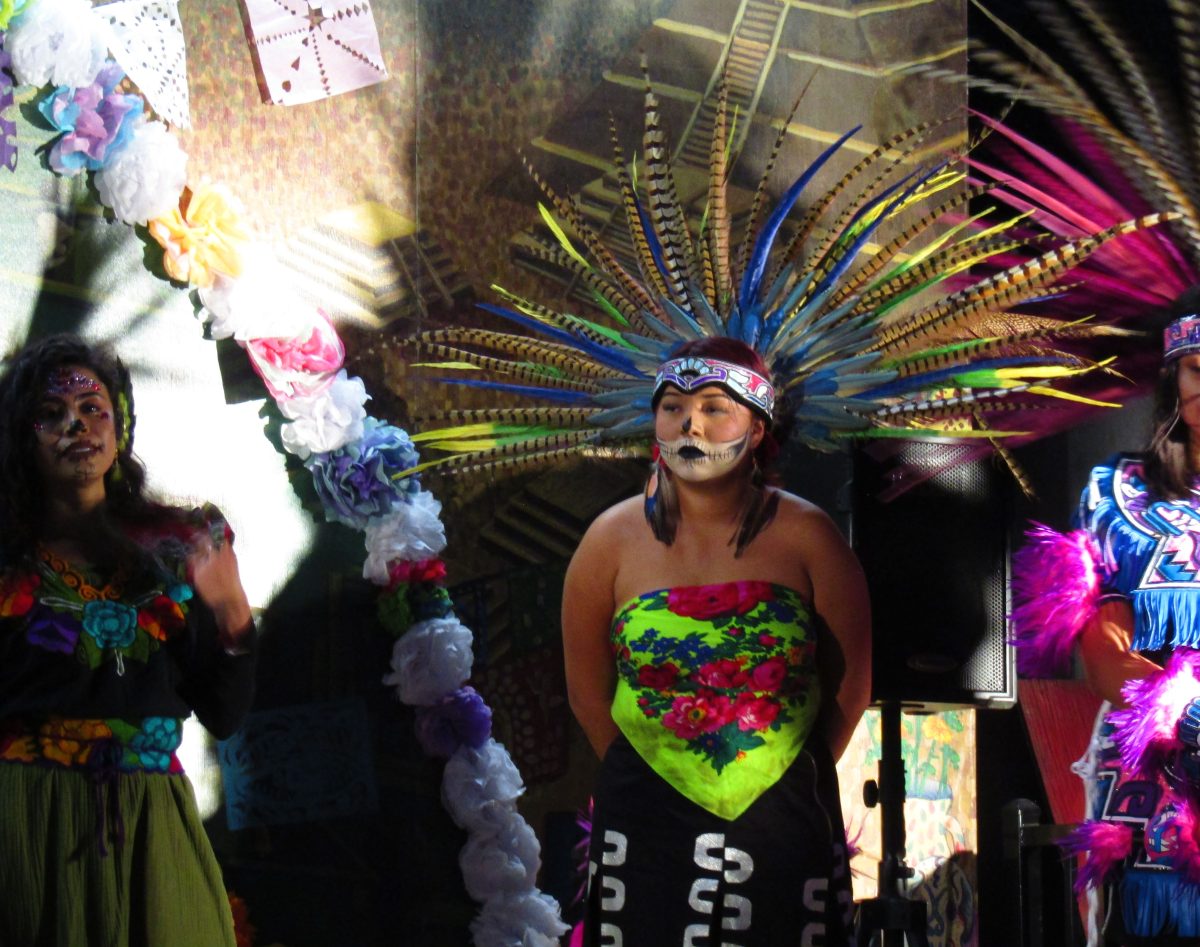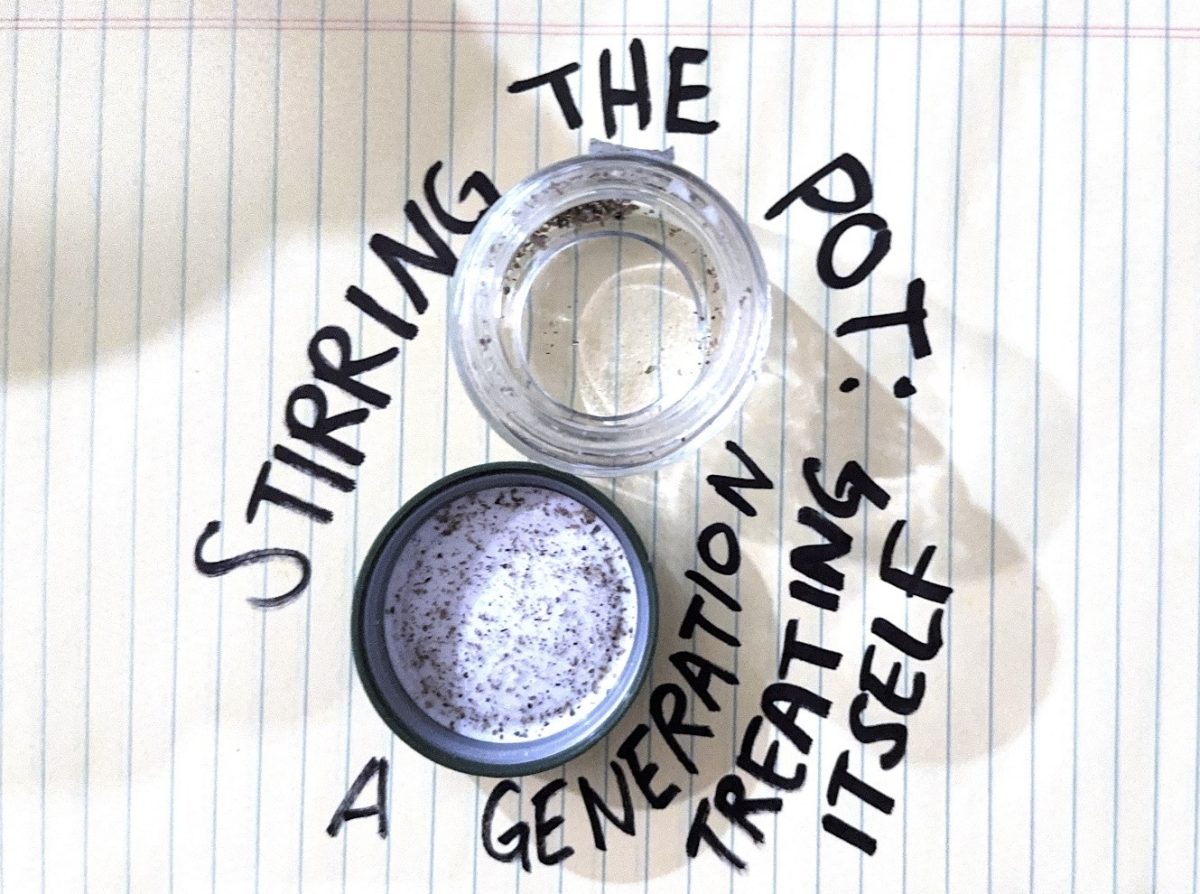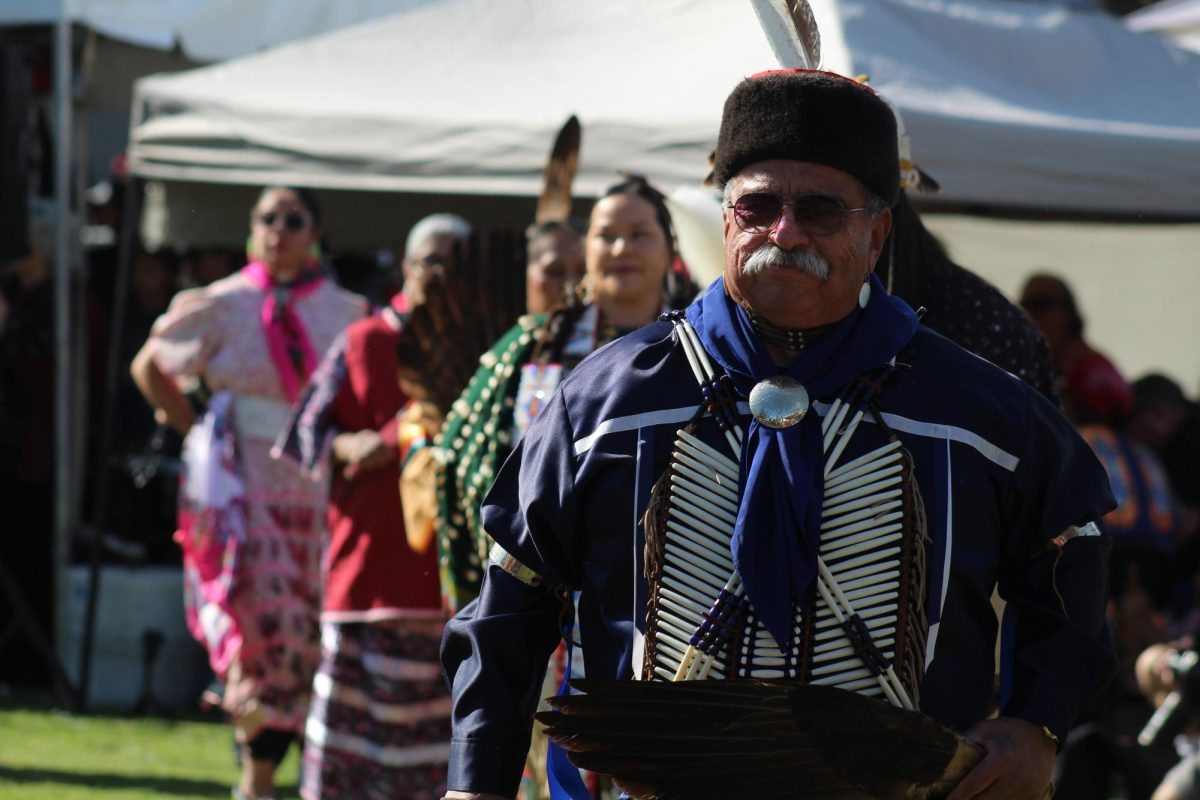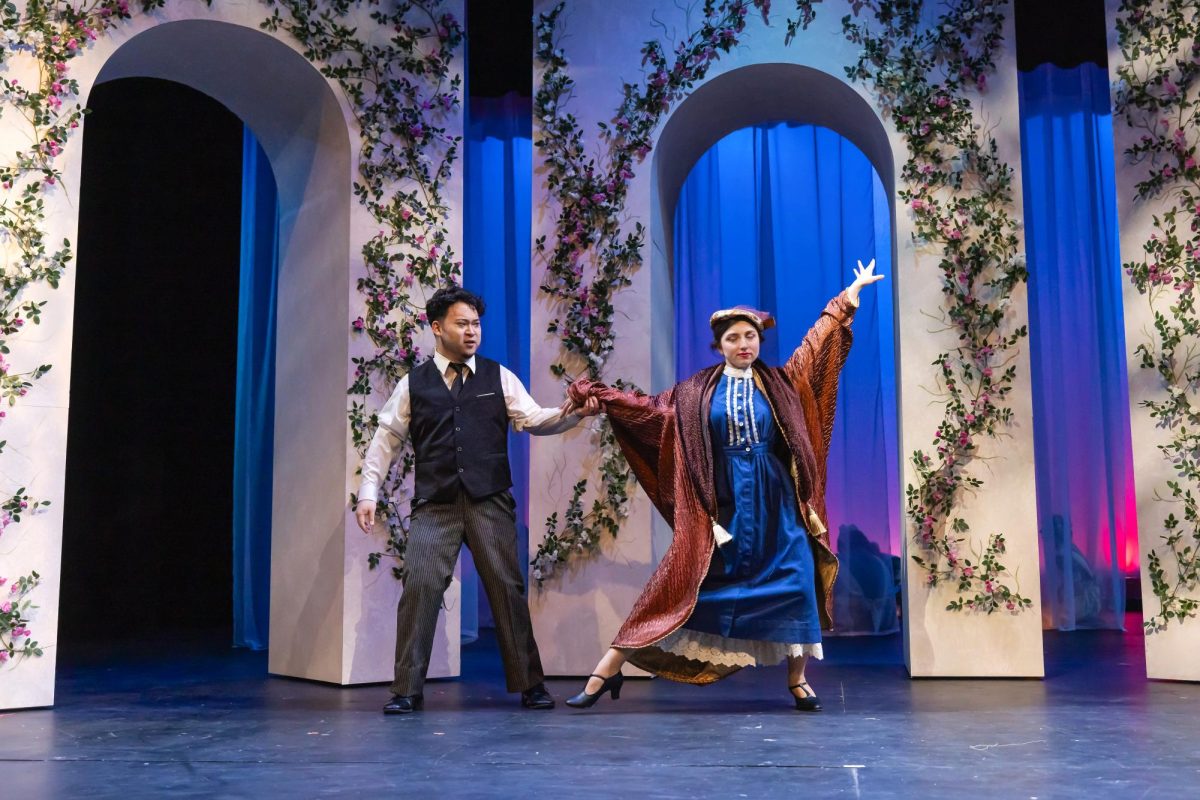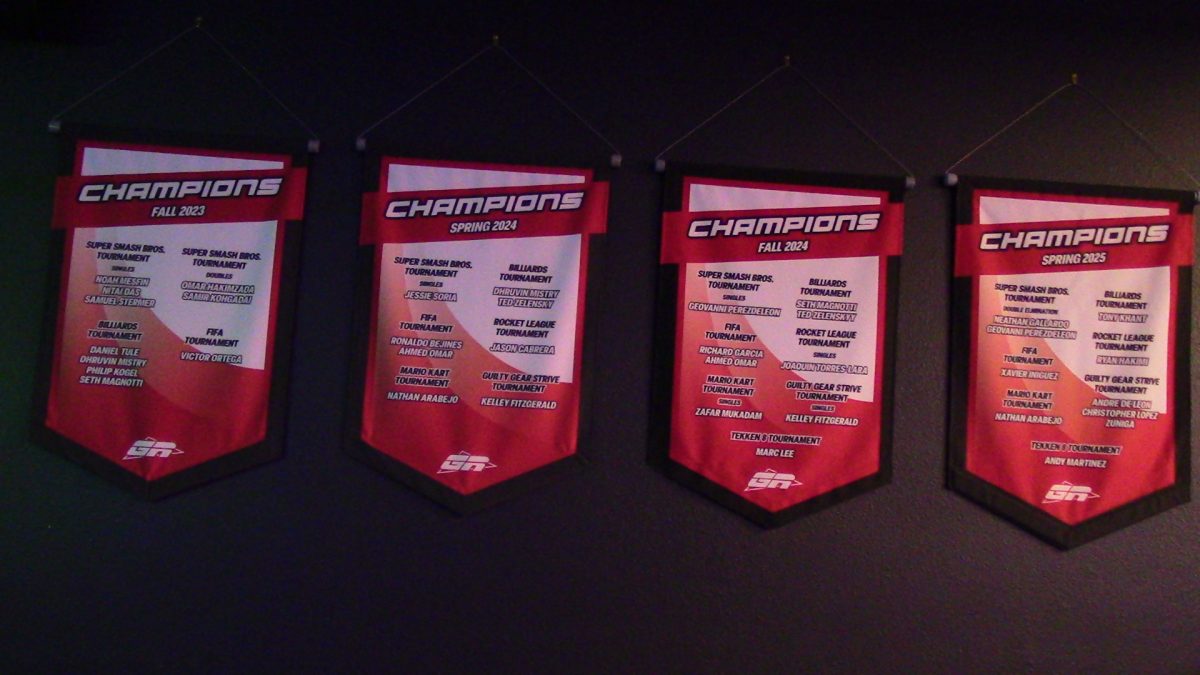As families gathered with their loved ones on the night of Nov. 1, “Miccaihuitl” brought together the Latine community with vendors, community altars, and engaging workshops.
Miccaihuitl is another name for Day of the Dead, originating from an Aztec ritual that honors the Goddess of Death named Miccaihuitl, as well as passed on relatives and loved ones. The arrival of Catholicism in Mexico evolved the tradition into the modern celebration we know today, where people create altars with candles, brightly colored decorations, flowers, and the favorite food and personal belongings of the deceased loved one that is being honored.
It is believed that during this holiday, those who have passed away can come back to visit their family and enjoy the goods and celebrations that are taking place.
The event was hosted by M.E.Ch.A de CSUN, Colita de Rana and the Chicano/a/x Studies department, which are all organizations on campus aimed to represent the Hispanic community. It took place on Friday, Nov. 1 from 3 p.m. to 10 p.m.
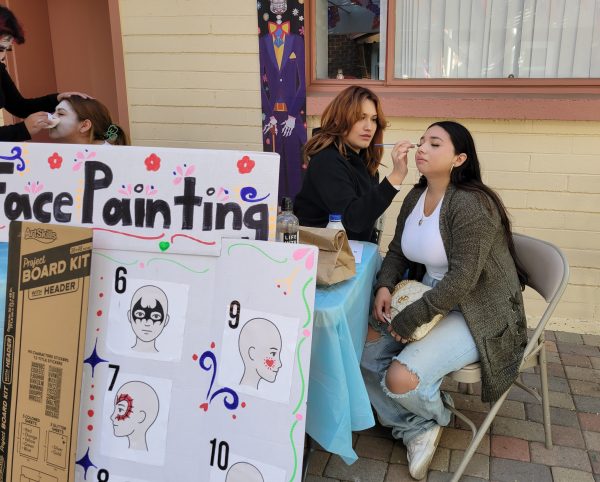
This event has been a tradition on CSUN’s campus since the 90s. Typically, it is a two-day event, but scheduling issues and the recent passing of the “Time, Place, and Manner” Policy enacted by the campus, had the event cut down to one longer day.
“Miccaihuitl” featured art workshops, vendors, face painting and many altars made by various student organizations and Chicano studies classes. There was an outdoor community altar that attendees were able to take part in to commemorate their loved ones as well as food from M.E.Ch.A and Tacos el Patron.
One student attendee, Heydi Arriaga, appreciated the approach to the event because the altars reminded her of the way her family has celebrated Dia de los Muertos in the past.
“The whole entire altar that they have is really cute. Honestly, it’s really homey. That’s actually how we do it at home as well. We have their own little corner that we’ll put them in, and then we’ll put Cempasuchiles everywhere,” Arriaga said.
Cempasuchiles, or Marigold flowers, are the flower of choice for Dia de los Muertos, because their strong colors and scents are believed to help guide loved ones back to their families.
Attendees were invited to lay Cempasuchiles on the community altar and think of a loved one that they wanted to honor, and by the end of the night, it was lit up with orange and yellow flowers.
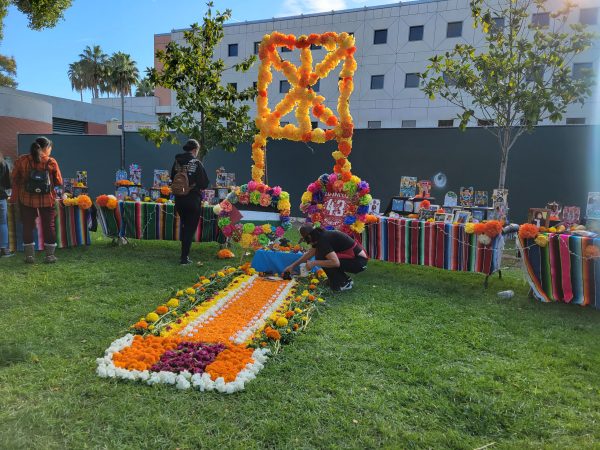
They also had a procession in front of the Art Gallery to kick off the evening, where the group Kalpulli Tlahuicole showcased traditional Aztec dances. Audience members were then invited to call out the name of a loved one to honor them and the community called back to honor the loved one as well, in a ceremony called the Ancestral Cry.
“People come in and they’re allowed to take the stage, anybody can shout the name of a person that they want to remember, and everybody else says ‘presente’ to show that they are there with the community,” said Sam Torres, Vice President of M.E.Ch.A. “They share stories, maybe a funny story about a loved one who’s passed, share a little bit about them. It’s a very, very soft, tender moment with the community, but it’s such a beautiful gathering. It’s something that we really try to encourage the community to take part in, because that’s what it’s all about, is to present to the community that they’re part of us. Everybody is welcome.“
The Department of Central American and Transborder studies were also in attendance at the event, showcasing “barriletes,” or kites, that are typically created to celebrate Dia de los Muertos in parts of Guatemala.
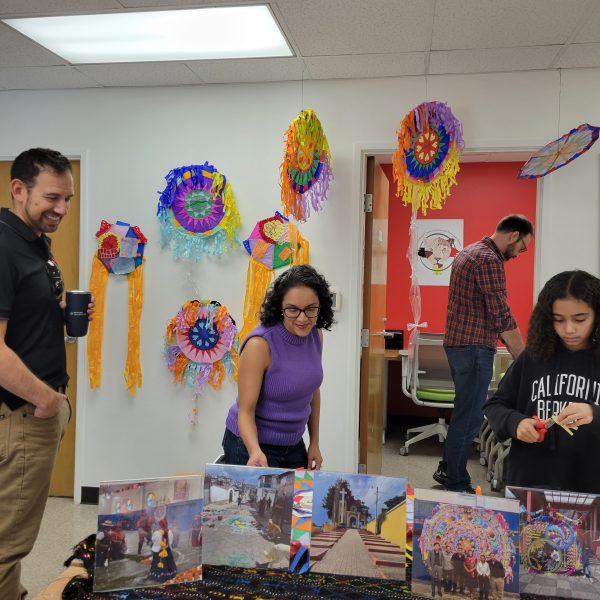
Peer mentor Veronica Hernandez was able to provide some insight on the connection between barriletes and the Day of the Dead.
“Barriletes are supposed to represent symbols for spirits and ancestors to come home,” Hernandez said. “If we think of the Day of the Dead as a ceremony that bridges the two worlds, then the barriletes are the sign of ‘this is where your family is and this is where you’re supposed to come.’”
There were over a dozen altars throughout the Chicane House and Art Gallery, from different Latin American cultures that all came together. There was also one altar created by Filipino activist group Anakbayan Northridge, to commemorate Filipino activists and famous figures who lost their lives.
One member of the group, Edel Evangelista, who was running the group’s table inside the Chicane House, hoped that tabling the event would bring awareness to issues that Filipinos face.
“We’re here today [to] commemorate the lives of people in the Filipino movement and from the Philippines whose lives have been lost due to a lot of the mass issues that we’re seeing them face such as forced migration and the grip of their voices as activists being taken away by an oppressive government– and I think it’s really important for us to be able to voice these stories,” said Evangelista.
The rest of the night included performances from musical group Conjunto Hueyapan and Ballet Folklórico de Aztlán, as well as music from DJ Mestizo.
For more information on M.E.Ch.A and Colita de Rana, visit them on Instagram at @mecha.de.csun and @csun.colitaderana or on CSUN’s website.
